Nigiri vs Sashimi: What’s the Difference? (Plus Recipes)
on Feb 08, 2022
This post may contain affiliate links. Please read my disclosure policy.
Nigiri and Sashimi are two traditional Japanese dishes that have become popular across the globe. If you’re a fan of sushi, you’ve probably already seen these dishes served in Japanese restaurants. Like sushi, nigiri and sashimi are usually served with wasabi, pickled ginger and soy sauce to enhance flavor.
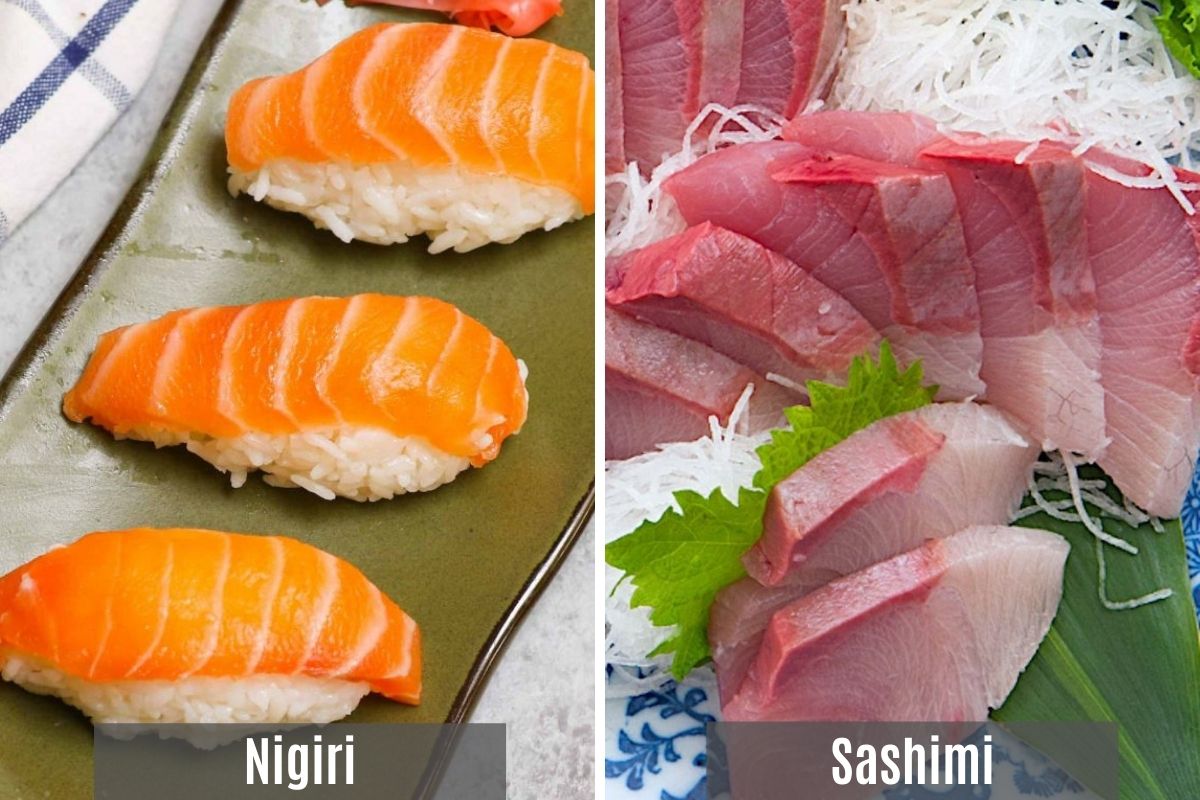
Sashimi and nigiri usually fall under the umbrella of sushi, and both are popular Japanese dishes. In this article, we’ll explain the differences between nigiri and sashimi, and how they both differ from sushi!
What is Nigiri?
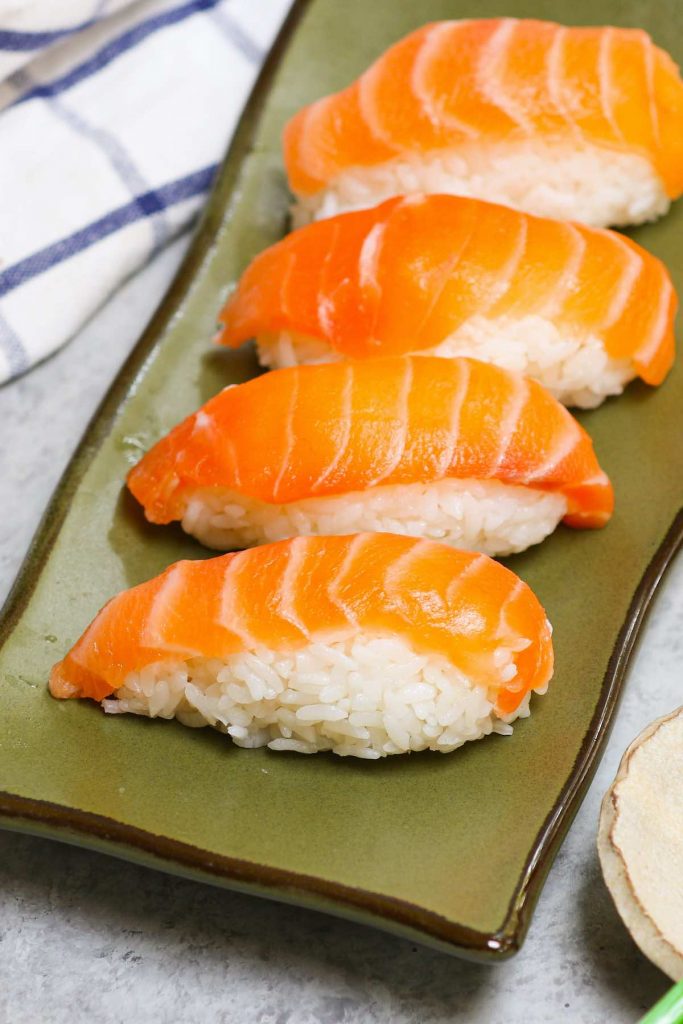
Nigiri is a thin piece of raw fish that sits on top of a cluster of vinegared sushi rice. It’s made with high-quality cuts from a variety of fish, such as bluefin tuna, salmon, yellowtail and red snapper.
TIP: The best fish for nigiri is bluefin tuna or salmon, they have a high-fat content and these firm cuts of fish will melt in your mouth!
What is Sashimi?
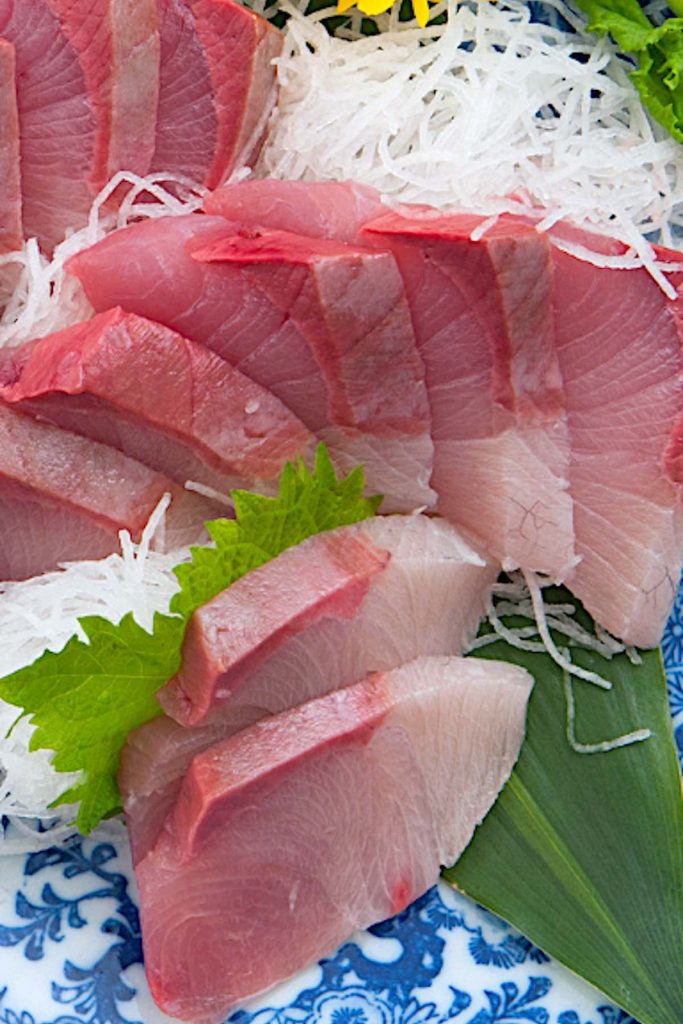
This may be a surprise but sashimi is technically not sushi! Sashimi is simply thin pieces of raw meat that are served without rice or any additional ingredients. Unlike nigiri, sashimi is not always fish; meats like beef, horse, frog and even chicken can also be made into sashimi.
What Is the Biggest Difference Between Nigiri and Sashimi?
The biggest difference between these two dishes is that nigiri has rice while sashimi does not. The taste of the vinegared rice adds a flavor contrast to nigiri that cannot be found with sashimi. Another difference is that sashimi is always served raw, while nigiri sometimes uses cooked or seared fish.
FAQ:
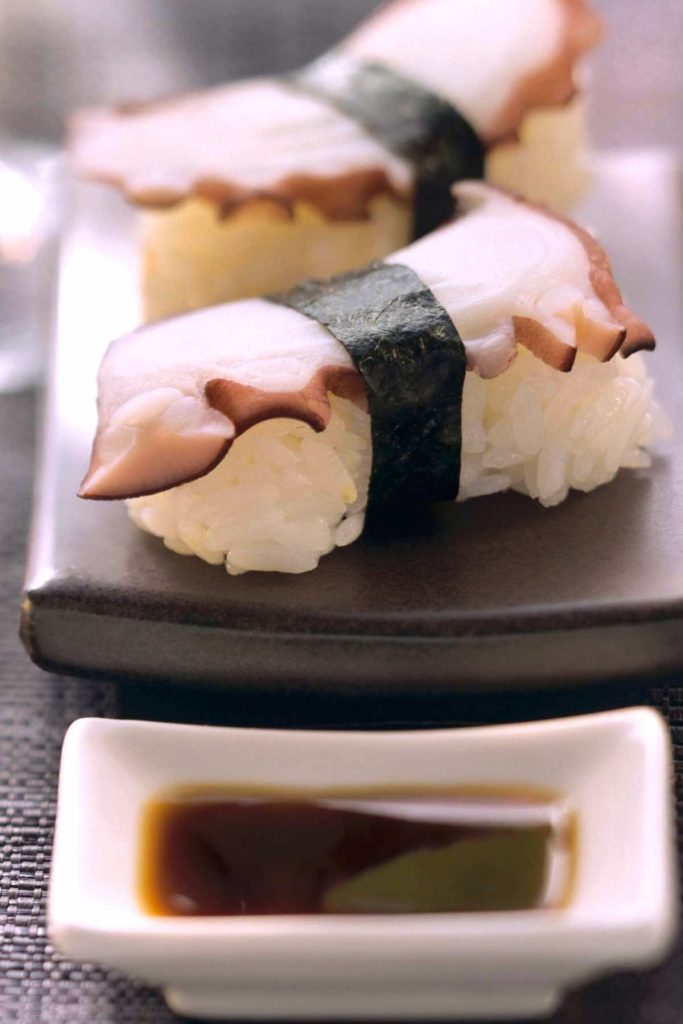
Which is Better: Sashimi or Nigiri?
The answer to this question probably depends on personal preference and how hungry you are. Because it has rice, nigiri is more similar to sushi and will probably be less intimidating for those of you looking to expand your palette. On the other hand, sashimi is the better option if you are on a keto diet. Sashimi is also less filling than nigiri, so you’ll probably need some side dishes to go with it.
Why is Nigiri More Expensive Than Sushi?
Sushi typically has more ingredients than nigiri, so it may seem odd that nigiri is usually the more expensive of the two. This is mostly because nigiri only uses the highest quality cuts of fish, while sushi rolls can include other meat and vegetables. Nigiri also tends to use pricier fish, like bluefin tuna, which is full of flavor and melts in your mouth. In addition, creating uniform portions of nigiri takes more time than making most sushi rolls.
What’s the Difference Between Sushi, Sashimi and Nigiri?
Sushi is different from both nigiri and sashimi, though there is some overlap. Unlike sashimi and nigiri, sushi rolls are made with at least 3 ingredients. Sushi maki rolls are made with raw fish and other ingredients, like vegetables and sauces, that are wrapped in nori and rice and formed into rolls. Hand roll sushi, or temaki, is very similar to maki rolls but they’re formed into larger, cone-shaped rolls.
TIP: Sashimi and nigiri are both healthier than sushi because they don’t have high-calorie ingredients like tempura or sauce.
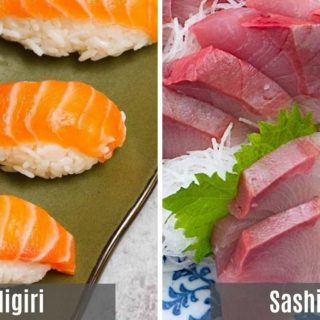
How to Make Nigiri and Sashimi
Ingredients
Nigiri:
- 1 cup sushi rice, uncooked
- 1 cup water
- 1 tablespoon sushi vinegar
- 2 teaspoons wasabi
- 8 oz toppings, pick a favourite from salmon, tuna, shrimp ebi, tamago egg, yellowtail hamachi, or eel
Instructions
Nigiri:
- Step 1: Cook the Sushi Rice: Wash and rinse the rice with cold water. Add the rice and water to the rice cooker. Cook according to the instruction.
- Step 2: Season the Rice: Transfer the rice to a large bowl and let it cool down slightly. When it’s still very warm, stir in the sushi vinegar.
- Step 3: Prepare the Topping: If you use raw fish, cut it against the grain, with an angle of 30 to 45 degrees. I recommend cutting it to 3-inch long, 1-inch wide, and 1/4-inch thick pieces.
- Step 4: Shape the Rice: Place about 3 tablespoons of rice in your hand. Squeeze it together until it rolls into a firm oval shape. Make the bottom flat with the rounded top.
- Step 5: Assemble the Nigiri: Place the fish, egg, or veggie slice on the root of your fingers. Then take a pea-sized portion of wasabi, and spread it in the middle of the slice. Place the rolled sushi rice onto the topping slice, and bend your fingers to cover both the topping and rice together. Press down the rice using the index finger from the other hand. Turn the topping and rice and let the topping slice sit on top of the rice.
Sashimi:
- Slice the Fish: Cut the raw yellowtail fish against the grain. You can cut it straight down or at an angle. You can adjust the angle to get the proper length and thickness.
- Arrange Yellowtail Sashimi: On a cold plate, add the optional shredded daikon.
- Layout yellowtail sashimi slices, together with optional wasabi, pickled ginger, and other ingredients.
- Serve with soy sauce and enjoy!
Nutrition information provided is an estimate only and will vary based on ingredient brands and cooking methods used.


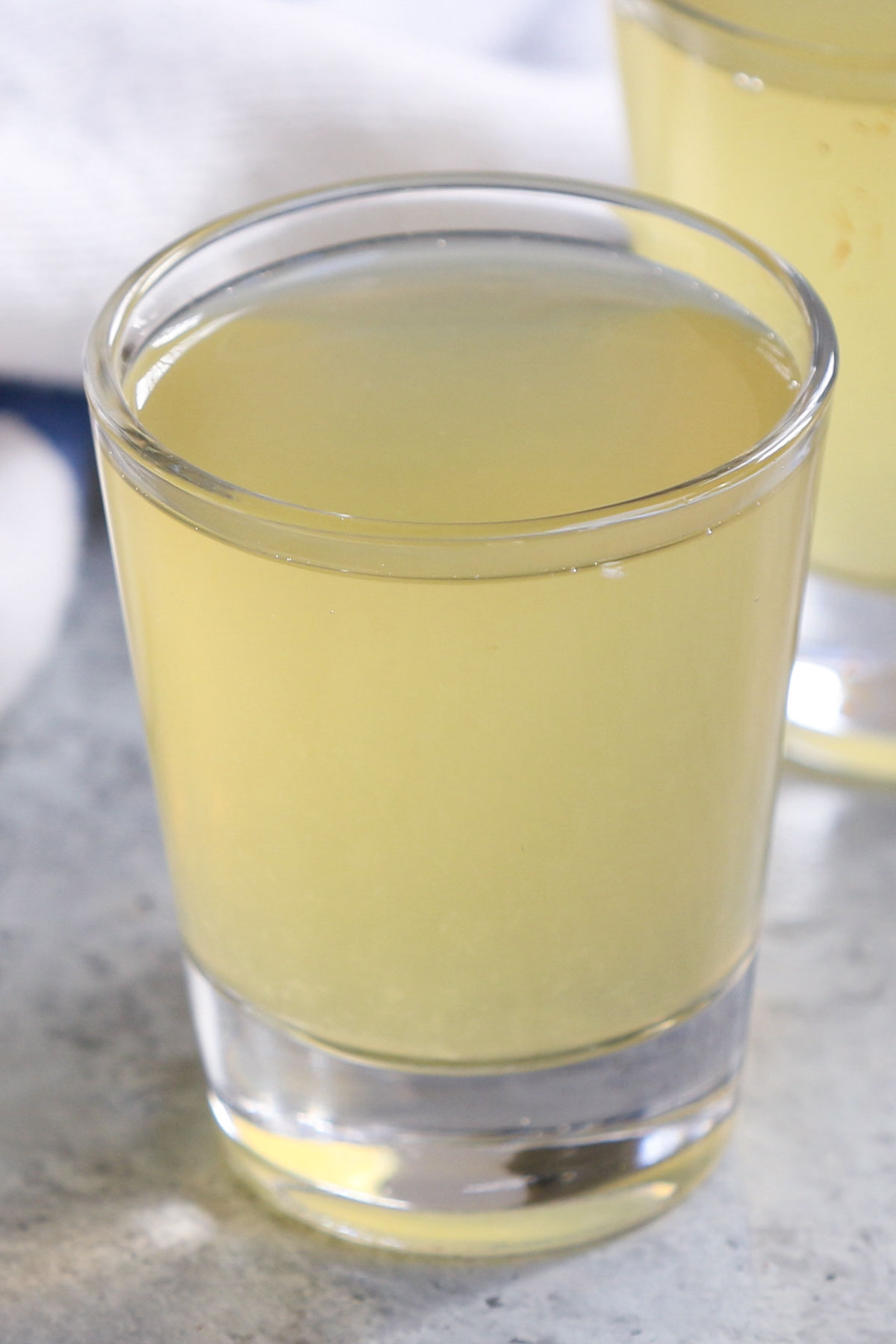
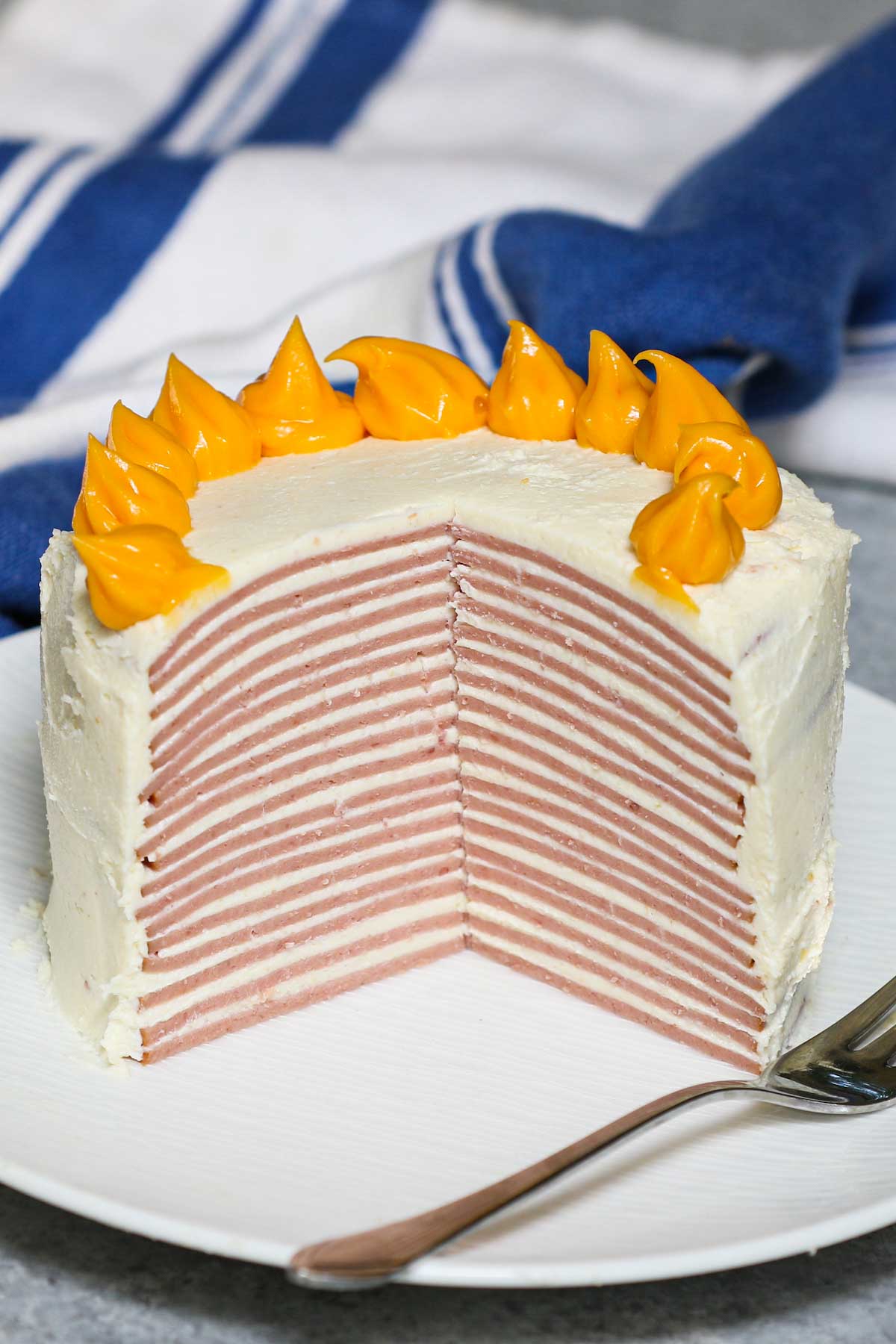
Just want to thank you ….amazing
Perfect! Thank you very much.